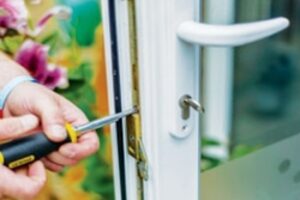30 Inspirational Quotes About Knob Lock Replacement

Knob Lock Replacement: A Comprehensive Guide
Knob locks are basic yet important components for home security. Although they are often the first line of defense, they can use out or become damaged in time, necessitating their replacement. This article supplies an extensive take a look at knob lock replacement, consisting of when and how to do it, the tools needed, and responses to regularly asked concerns.
Comprehending the Need for Knob Lock Replacement
Knob locks play a vital function in protecting homes and buildings. However, different aspects might warrant their replacement:
- Wear and Tear: Frequent usage can lead to destruction, making locks less dependable.
- Loss of Key: Losing a key can endanger security, prompting a lock change.
- Broken Lock: Accidental damage or tried burglaries can render locks inefficient.
- Upgrading Security: Homeowners might wish to upgrade to a more secure locking mechanism.
Signs that a Knob Lock Needs Replacement
Determining when to change your knob lock can conserve homeowners from future headaches. Here are some indicators:
- Difficulty Turning the Key: If the key doesn't turn efficiently, it may be time for a replacement.
- Loose Knob: A knob that wobbles or feels loose can jeopardize security.
- Visible Damage: Cracks or chips in the lock indicate substantial wear and must be replaced.
- Rust or Corrosion: Signs of oxidation can affect the lock's efficiency.
Tools Required for Knob Lock Replacement
Before beginning the replacement process, it's necessary to gather the necessary tools. A well-prepared toolkit generally consists of:
| Tool | Purpose |
|---|---|
| Screwdriver (Flat & & Phillips) | To remove the screws from the lock. |
| Drill (if required) | To develop new holes for the new lock. |
| Determining Tape | To measure door density and backset. |
| Replacement Knob Lock | The new lock to be set up. |
Step-by-Step Guide to Replace a Knob Lock
Replacing a knob lock is within the skill level of many homeowners. The following actions provide a straightforward guide to make sure the process goes smoothly:
Step 1: Gather Your Supplies
Ensure you have actually collected all essential tools and your replacement lock.
Action 2: Remove the Old Lock
- Locate and remove the screws protecting the lock to the door.
- Thoroughly pull the knob and the locking mechanism apart from both sides of the door.
- If needed, utilize a drill to remove any screws that can not be reversed by hand.
Action 3: Measure Door Specifications
Procedure the thickness of the door and the backset (range from the door edge to the center of the lock). Many knob locks come with adjustable functions to accommodate different door sizes, but making sure compatibility is crucial.
Step 4: Install the New Lock
- Insert the new lock into the hole.
- Line up the exterior knob with the interior knob, guaranteeing they are correctly positioned.
- Secure the lock with screws, making certain they are tightened adequately but not overtightened to avoid stripping the screw holes.
Step 5: Test the Lock
After installation, test the performance of the new lock. Make sure that the crucial turns efficiently and that the knob operates with no resistance.
Action 6: Final Adjustments
If the knob feels loose or if the lock is not operating perfectly, verify your work. Adjust screws and make sure all components are firmly attached.
Maintenance Tips for Knob Locks
Post-replacement, maintaining a knob lock is necessary for its longevity. House owners can utilize a number of practices:
- Regular Lubrication: Apply graphite or silicone lube to the keyhole to keep the mechanism smooth.
- Cleaning: Wipe down the knob routinely to prevent grime build-up.
- Examine for Damage: Periodically examine for wear and tear, specifically after severe weather.
Regularly Asked Questions
1. Can I change a knob lock myself?
Yes, replacing a knob lock is a DIY-friendly job. With Repair My Windows And Doors and a standard understanding of the process, homeowners can conveniently finish the replacement.
2. What type of knob appearance should I select?
Select a knob lock based upon your security requires. Grade 1 locks use the greatest security, while Grade 3 locks are appropriate for interior doors.
3. How do I select the right size lock?
Procedure the density of your door and the backset range. A lot of knob locks are adjustable to fit different sizes, but it's important to check compatibility with your door requirements.
4. What should I do if the new lock does not fit?
If the new lock does not fit properly, speak with the maker's directions for size changes or call an expert locksmith professional for assistance.
5. Is it required to change all locks at the same time?
Not necessarily. It's frequently practical to replace locks as concerns occur. However, for consistency, numerous property owners choose to replace all locks at the same time, particularly if they are part of a larger security upgrade.
Knob lock replacement is a useful job that can substantially boost home security. By following the steps detailed in this guide, house owners can effectively replace their locks, guaranteeing a secure and safe environment. Regular maintenance and alertness can further improve the longevity and effectiveness of knob locks, offering assurance for several years to come.

